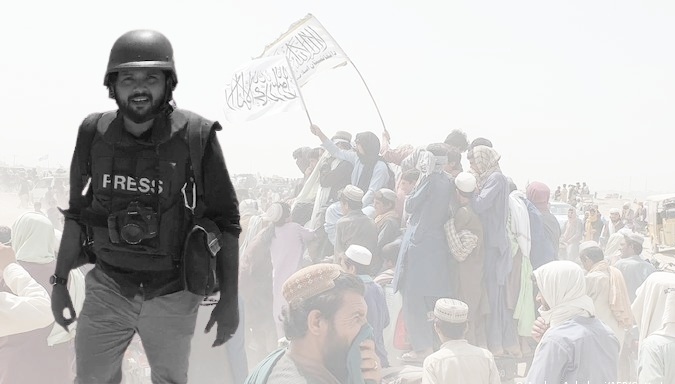
A report in the Washington Examiner says that Indian journalist Danish Siddiqui was not simply killed in a crossfire in Afghanistan but was captured alive by Taliban who then verified his Indian identity and then executed him. The report specifically claims that ‘Siddiqui was alive when the Taliban captured him. The Taliban verified Siddiqui’s identity and then executed him, as well as those with him. The commander and the remainder of his team died as they tried to rescue him”.
The report titled ‘Don’t whitewash details of photojournalist Danish Siddiqui’s murder‘ mentions reports of his death in various international news outlets like the BBC, New York Times, Washington Post, and even the State Department statement which seemingly tone downed the brutal murder of the Indian journalist. The report by Micheal Rubin, a senior fellow at the American Enterprise Institute, states that Danish Siddiqui was not simply killed in a crossfire in Afghanistan, nor was he simply collateral damage, but was “brutally murdered” by the Taliban after verifying his identity.
According to the Rubin report, Siddiqui travelled with an Afghan National Army team to the Spin Boldak region to cover fighting between Afghan forces and the Taliban to control the lucrative border crossing with Pakistan. When they got to within one-third of a mile of the customs post, a Taliban attack split the team, with the commander and a few men separated from Siddiqui, who remained with three other Afghan troops.
During this assault, shrapnel hit Siddiqui, and so he and his team went to a local mosque where he received first aid. As word spread, however, that a journalist was in the mosque, the Taliban attacked. The local investigation suggests the Taliban attacked the mosque only because of Siddiqui’s presence there, the report said.
“Siddiqui was alive when the Taliban captured him. The Taliban verified Siddiqui’s identity and then executed him, as well as those with him. The commander and the remainder of his team died as they tried to rescue him,” it said.
“While a widely circulated public photograph shows Siddiqui’s face recognizable, I reviewed other photographs and a video of Siddiqui’s body provided to me by a source in the Indian government that show the Taliban beat Siddiqui around the head and then riddled his body with bullets,” writes Micheal Rubin. The Taliban’s decision to hunt down, execute Siddiqui, and then mutilate his corpse shows that they do not respect the rules of war or conventions that govern the behaviour of the global community, he writes.
On the reasons for granting Siddiqui the permission to visit the battlefield area, Rubin writes that the Afghan National Army gave Siddiqui permission to cover the fighting near Spin Boldak because Afghan forces believed they would win and documenting a victory could provide a much-needed morale boost.
As for the reasons for executing Siddiqui, Rubin writes that the Taliban’s also want to signal that Western journalists are not welcome in any part of Afghanistan they control and that they expect Taliban propaganda to be accepted as truth. “In effect, Siddiqui’s murder appears to show that the Taliban have concluded that their pre-9/11 mistake was not that they were cruel and autocratic but rather that they were not violent or totalitarian enough”, Rubin writes.
The report questions the State Department as to why it continues to pretend that Siddiqui’s death was just a tragic accident. The author criticises the Biden Administration’s decision to uphold the Feb 2020 U.S.-Taliban agreement and withdraw troops completely even though the Taliban have not stood by the agreement as it condemns Afghanistan to a bloodbath. “It (Taliban) threatens to destabilize the broader region. But rather than confront reality, the Biden administration appears intent to whitewash Taliban crimes”, it states.
